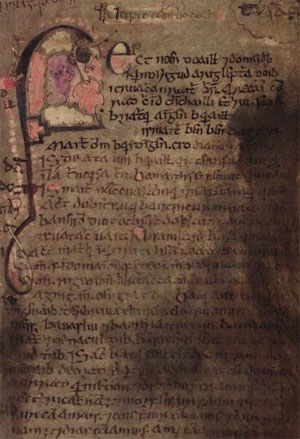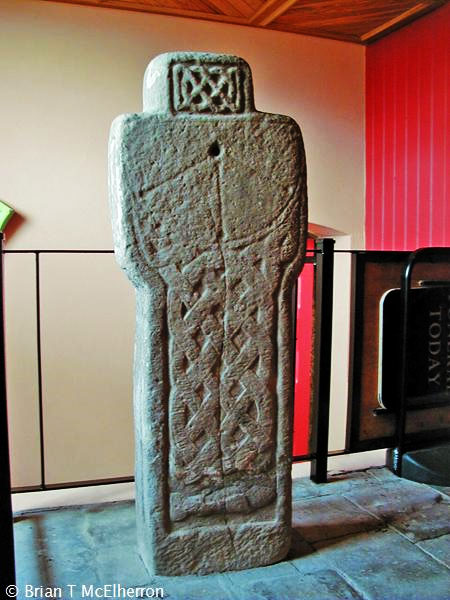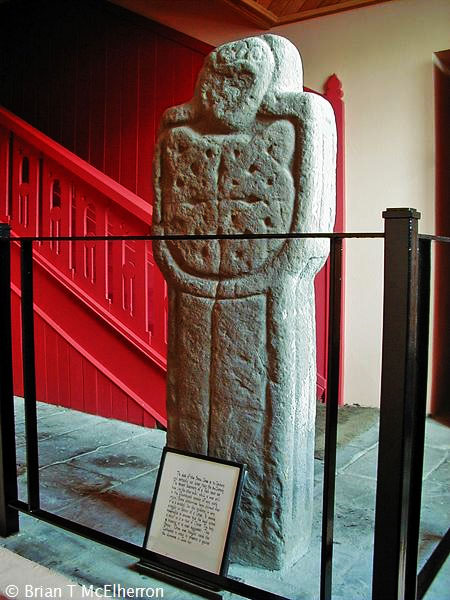Sundials in Ireland - Ancient Monastic Dials
Clogher Co.Tyrone

|
In the 12th century
Old Irish manuscript Lebor Laignech, the Book of Leinster, it has the
Cloch Óir ('The Gold Stone' at Clogher, Co.Tyrone ) as one of the
Three Oracle Stones of Ireland, the others being the Lía Fáil
(the Stone of Destiny at Tara, Co. Meath) and Crom Cruaich (the
Killycluggin Stone in Cavan). |

|

Many thanks to Brian McElherron for
photos |
According to tradition a
monastery and bishopric were founded in Clogher circa 490 A.D. by St. Macartan
on the orders of St. Patrick. In 1041, the church of Clogher was rebuilt, and
dedicated to the memory of St. Macartan. It was again rebuilt in 1295 by
Matthew M'Catasaid, Bishop of Clogher, but burnt to the ground on 20 April 1396
along with two chapels, the abbey, the court of the bishops, and thirty-two
other buildings with all their contents. In 1610 the Catholic Abbey and its revenues
were confiscated by James I, King of England, and given to the Church of Ireland Diocese of
Clogher. The present church was built about 1744 A.D.
There is no trace of the Cloch Óir at Clogher
today but there is an ancient monastic vertical stone sundial dated circa
800A.D. 1470 mm high, it is the most elaborately carved monastic
sundial in Ireland with geometric knotwork designs both below and above the
sundial.
"This is a rather worn sandstone slab, with an ugly long
crack running through both faces, for more than half the length of the stele;
however the sundial is clear and intact... The appearance of this stone is very
ancient, and some of the decorative features indicate a remote date of origin.
The face, on which the sundial appears, shows a different form to all other
Irish monastic sundials. The body of the stele, with a small rectangular
extension at the top, is decorated with an inter-laced design resembling basket
work, under which, in relief, is a well shaped fish. On the rear face one sees
the indistinct face of a man, and in the part that would correspond to the
torso, is engraved a very rudimentary cross. The sundial is inscribed in a
semicircle and shows three time lines, terminating in a very deep mark. The
segment angles follow the scheme 30, 90 and 150 degrees that are common in the
monastic sundials of Ireland."
From: The Ancient
Sundials of Ireland, Mario Arnaldi, The British Sundial Society,
2000
The sundial was removed from the old cemetery in 1969 to
inside the C.o.I.Cathedral of St. MacCartan at Clogher on the A4 between
Ballygawley and Enniskillen about 10km from Ballygawley
If you
know the location of a sundial in Ireland (NOT a mass produced
DIY Store garden ornament) please email it to me
(Click here to email
M.J.Harley) - a
member of British Sundial Society This site
is copyright M.J.Harley ©














